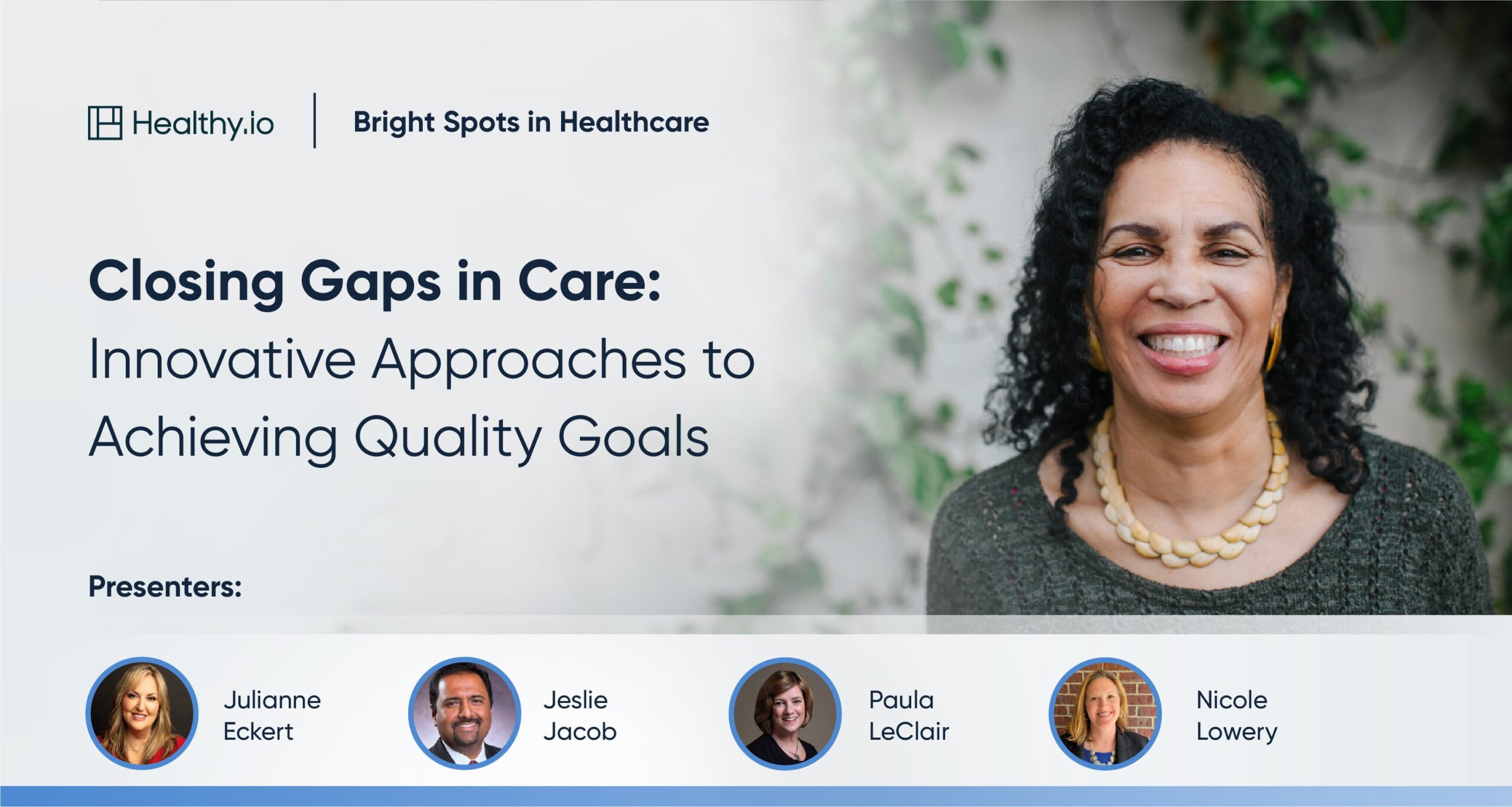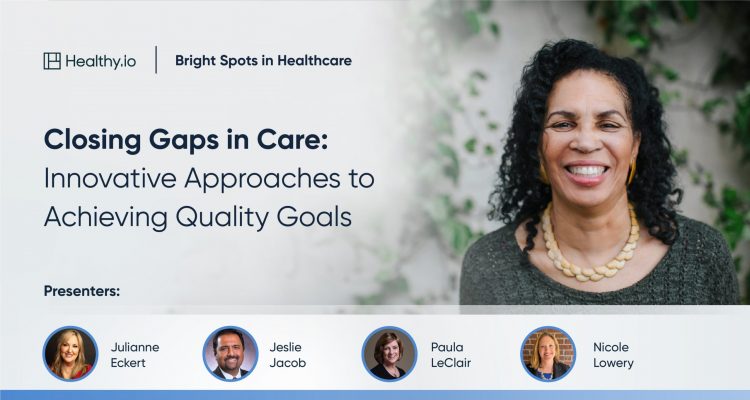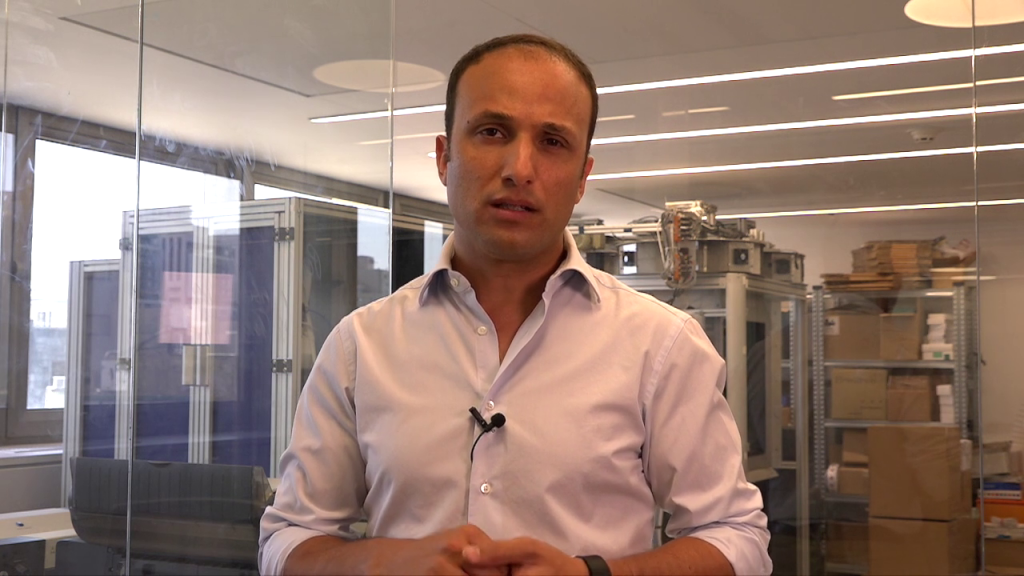Health care quality can seem complex. But behind the web of jargon and acronyms, it is easy to lose sight of its simple goals: chiefly, closing the gap between the health care outcomes that are potentially obtainable, and the real-world outcomes that we see in practice. When discussed in practical terms, it soon becomes clear that every player in the health ecosystem has an important role in contributing to quality of care.
By providing better care to more people early on, closing care gaps improves both health and economic outcomes, in addition to helping improve health equity. Yet despite this powerful alignment of incentives, effecting change at scale isn’t simple. How do payers and providers at the top of their game improve quality? How can they successfully work with companies developing the technology they need to achieve their goals?
Healthy.io and Bright Spots in Healthcare recently held a jargon-free roundtable discussion where senior healthcare leaders shared their playbook for closing care gaps and driving quality improvement. The event was hosted by Eric Glazer, CEO of Shared Purpose Connect, and featured speakers from Clover Health, Humana, Blue Cross Blue Shield of Illinois, and Healthy.io.
Here are some key learnings from the event:
Addressing basic needs
When confronting health inequities and social determinants of health, plans sometimes need to go beyond treatment and medication, and first address some of people’s most basic needs. Nicole Lowery, Director of Population Health Strategy, Office of Health Affairs and Advocacy at Humana, shared how the organization offers some members food cards they can use to buy healthy groceries. “We never want our members to have to choose between filling a prescription, going to the doctor, being able to pay that co-pay, or being able to put food in their pantry—and not just any food, healthy food,” she said. “We know that eating healthy and fresh food is expensive. So anything that we can do to help our members have that opportunity is really important.” They’ve also designed plans with allowances for care managers to address specific needs—like air-conditioning—that might not fall under the common definition of healthcare, but can be literal lifesavers in certain situations. “When we help members address those basic needs, we’re enabling them to focus on their health needs, such as getting primary care and medication adherence,” she said.
Maximizing access makes sense
Julianne Eckert, Director of Quality Improvement at Clover Health, may have surprised some viewers when she sang the praises of $0 premiums and $0 copays for primary care visits, and of open networks that allow members to consult with providers outside their own network. But while such options might entail short-term costs, they carry powerful health benefits in the longer term. “The hallmark of this is getting the patients to actually be able to go to the doctors instead of them delaying care,” she said. “We believe it encourages them to visit their PCP as often as they feel is necessary, enabling doctors to identify problems earlier and reduce suffering and helping patients avoid deferring care for financial reasons. The more successful we are at reducing or eliminating any and all barriers of care, the more likely that the member’s health will improve. And if they’re taking care of themselves by adhering to their medications and using their benefits, that’s going to decrease our Medical Loss Ratio overall because we’re not having that delayed catastrophic illness.”
Meeting members where they are
Going the extra mile to adapt care to people’s habits and needs can go a long way toward improving quality and closing care gaps. Julianne Eckert gave Clover Health’s partnership with Walgreens as an example. “The Walgreens pharmacy teams are embedded in communities where our members have established and trusted relationships,” she said. “And the physical proximity of Walgreens Health Corners to their homes speaks to the very spirit of what we’re trying to achieve: a differentiated experience to deliver individualized clinical and non-clinical services.”
Sometimes facilitating ease of access requires more than just physical proximity. Paula LeClair, Healthy.io’s U.S. General Manager, explained how our Minuteful Kidney solution allows people at risk of kidney disease to do their annual ACR urine test using their smartphone and a test kit. Allowing them to test from the comfort of their homes can dramatically increase member adherence to the test. “We need to meet members where they are,” she said. “At Healthy.io we coined the term, ‘delivering health care at the speed of life’. We’re designing and building innovative technologies for them that fit into their lives—and not the other way around.”
You can’t manage what you can’t measure
Supporting the healthcare needs of millions of members requires collecting data that is both comprehensive and timely. According to Jeslie Jacob, Divisional Vice President, Provider Performance and Provider Analytics, Reporting and Connectivity at Blue Cross Blue Shield of Illinois, large data gaps and data latency can have an adverse effect on quality measurement. “Clinical data is just not used at scale,” he said. “The implication is that when we have incomplete or not current data feeding the measurements, we don’t have a good picture of where we are, and our rates are impacted by that. When you take that list to a physician, they look at that list and go, ‘This isn’t what I see in front of me.’ The member outreach efforts are impacted. So I think focusing on efforts to make sure that we’re doing everything that we can to measure as best as possible […] has an important trickle effect on all of the other steps that need to happen in terms of provider engagement and member engagement.”
For more insights from the event, watch the video recording below or listen to the podcast version on Apple Podcasts, Spotify, or Google Podcasts.






